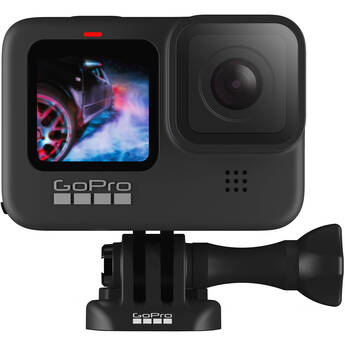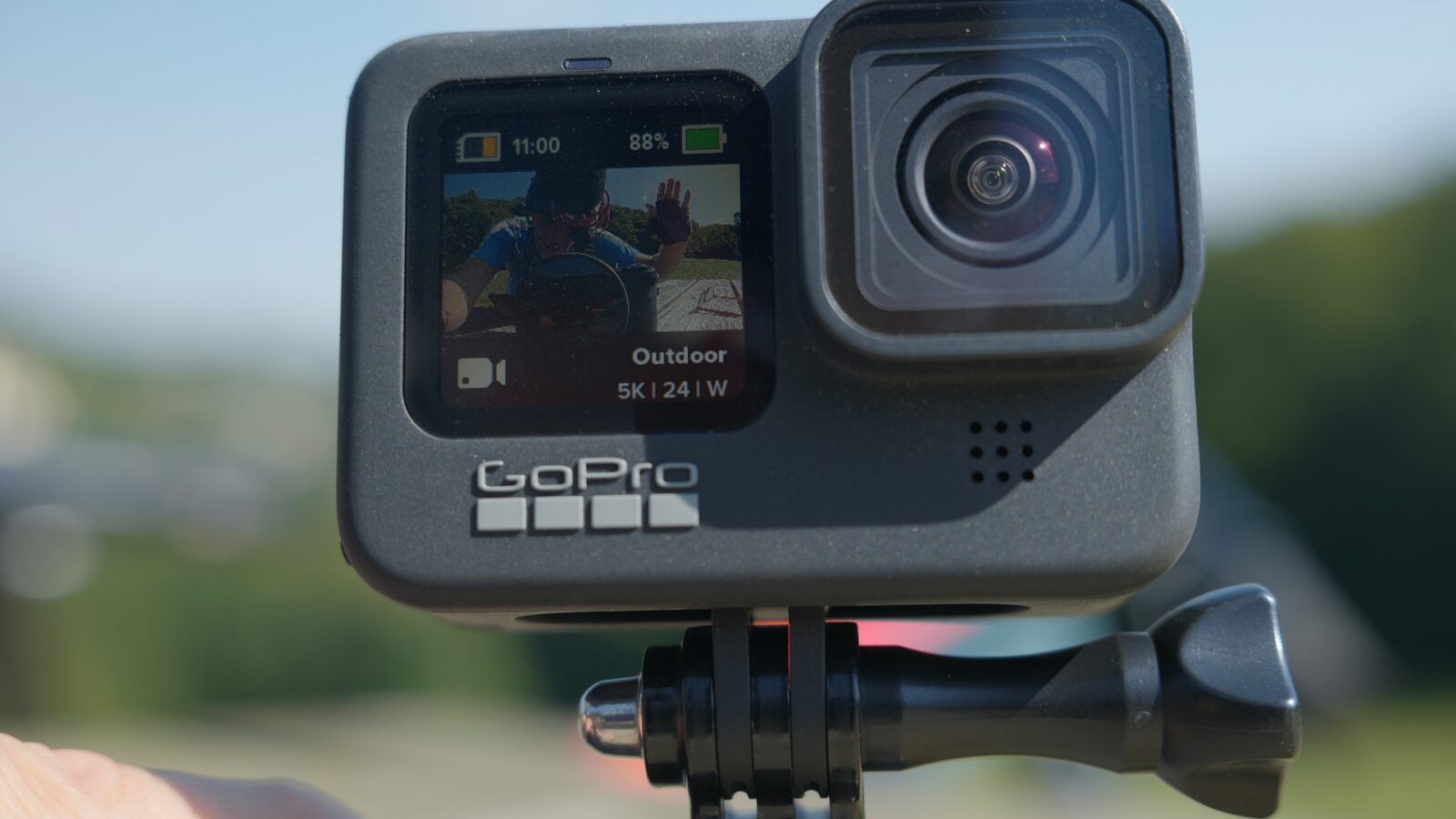GoPro HERO9 Review – Mountain Biking and Comparison to the HERO8
Music Courtesy of Epidemic Sound
A release of a new GoPro HERO camera is always a very exciting event for me – after all, each successive camera adds some additional goodies making those even better than before. However, image quality per se has not been improved since generation 6. So how does generation 9 fare? Curious to find out? Please read on my GoPro HERO9 Review.
I have been using GoPro cameras since the release of the HERO2, and my major use case is mountain biking and some water sports. Image quality and slow motion capabilities were always the major driving factors for me to use GoPro cameras, as no competitor so far has managed to reach the GoPro benchmark – which is a big achievement, given the red ocean of competition in this market space with numerous brands offering cheap knock-offs.
The latest GoPro HERO9 Black pushes the bar again in terms of image quality offering a new 23.6 megapixel sensor which allows 20MP photos and a new 5K video mode (5120×2880) with up to 30 frames per second – for the complete list of specs please head to Jakub’s article by clicking here.
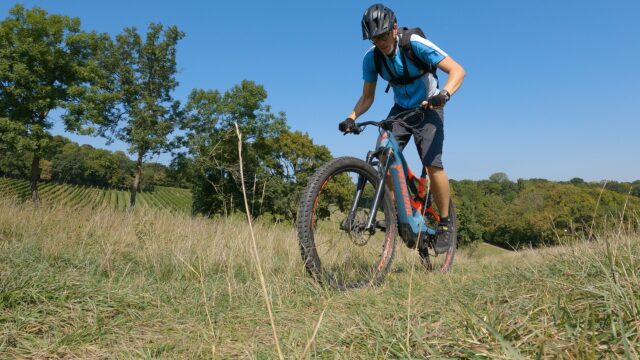
As per the spec sheet, frame rates / slow motion capabilities have not improved since the HERO6 Black – but my hopes were high to see an improved image quality in the HERO9 Black due to the new sensor. In previous generation models, 1080p240 mode was a pixelated mush (looking like SD footage), 2.7K 120fps was OK, and only 4K 60fps really looked great.
Filmmaking for Photographers
Hence, in this review, I will only focus on the image quality of the various modes and image stabilization. Photo modes, time-warp, and time-lapse were not tested. Also, it goes without saying that GoPro offers a nice app that allows one to control the camera, download footage, cut a little film, upload it an so.
The GoPro HERO9 Black Redesigned Body
The biggest news on the new body is a front LCD screen which allows you to frame your shot when you put the camera in a hidden spot – that is a big plus!
Also, the HERO9 Black body has grown a bit in size, but this also means that the LCD size on the back is bigger, which is good!
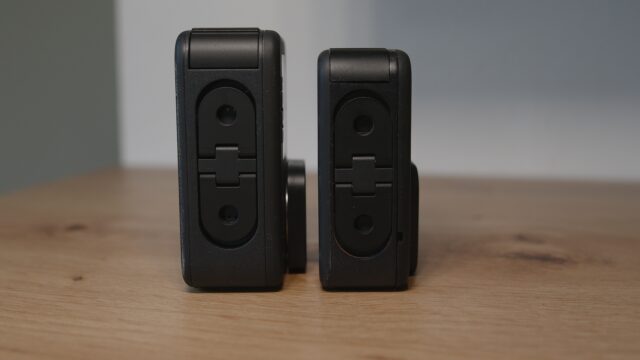
Unfortunately, the new bigger rear touchscreen is not so responsive. I hope this will be fixed with a future firmware upgrade.
The bigger body is now sporting a bigger battery, which has 40% more capacity than the previous generation batteries – this looks good on paper. I didn’t do a scientific test, but in the field, I found that battery runtimes were on a similar level to the Hero8 which I was running in parallel.
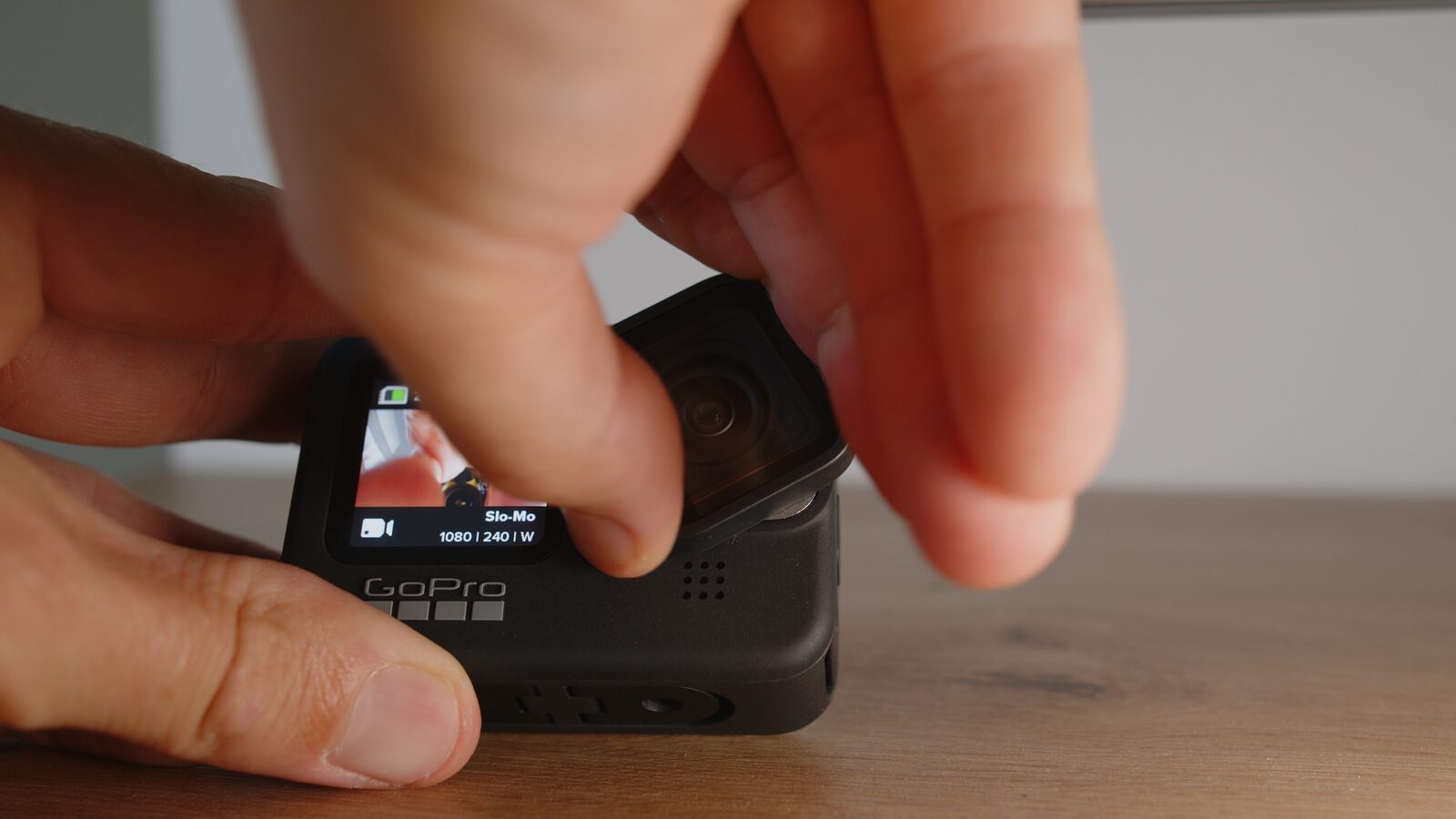
On the HERO9 Black, the replaceable front lens glass is back and this is a very welcoming thing. Actually, the reason why I didn’t upgrade my current GoPro to the previous model, Hero8 Black was the absence of this capability from that camera. However, the new front glass is not backward compatible, meaning you cannot use e.g. ND filters from previous generation GoPro’s on the HERO9.
Overall, as usual, the quality impression is great – the new HERO9 feels super solid. It certainly will take abuse in the field without issues…
Image Quality in Various Modes – HERO9 Black versus Hero8
For all the statements mentioned below, I used ProTune, “Flat” colors, “Medium” sharpness, HEVC, and high bitrate settings for the HERO9 and Hero8 cameras.
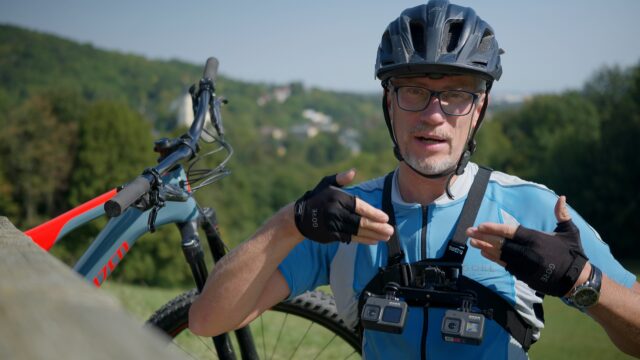
Let’s get this out of the way first – the new 5K mode up to 30fps (5120×2880) looks gorgeous. The color science, the auto white balance, the image detail – are all superb and definitely a big improvement over its predecessor.
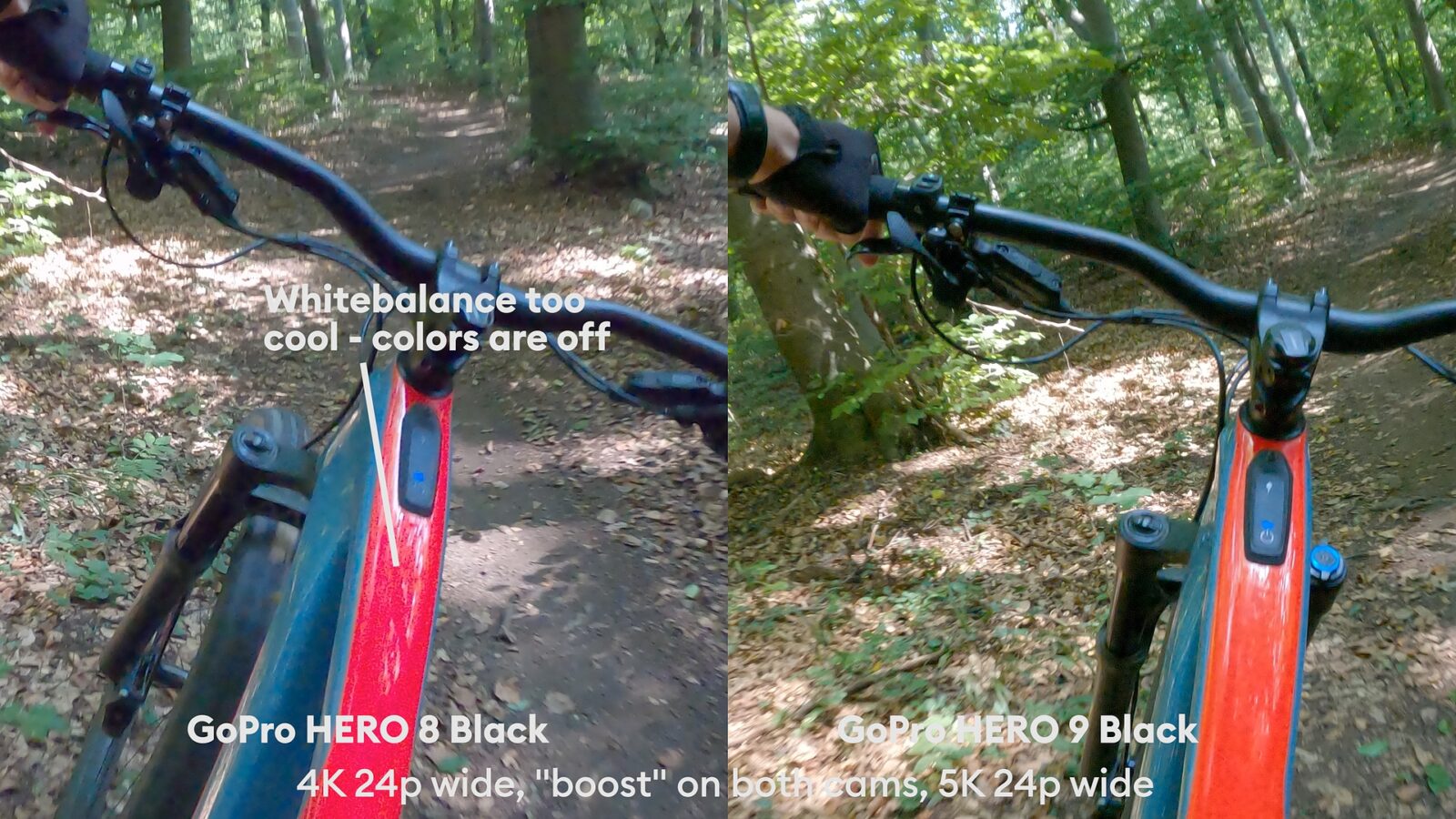
The bar has been raised again in 5K! It doesn’t have this over-sharpened harsh look that so many other action cameras show. 5K is recorded in HEVC (H265) codec, my shots had an average bitrate of 99Mbit/s.
This situation changes in 4K – strangely, the 4K mode is a bit over sharpened and looks more contrasty and harsh. The Hero8 Black in 4K resolution looks much better to my eye in comparison.
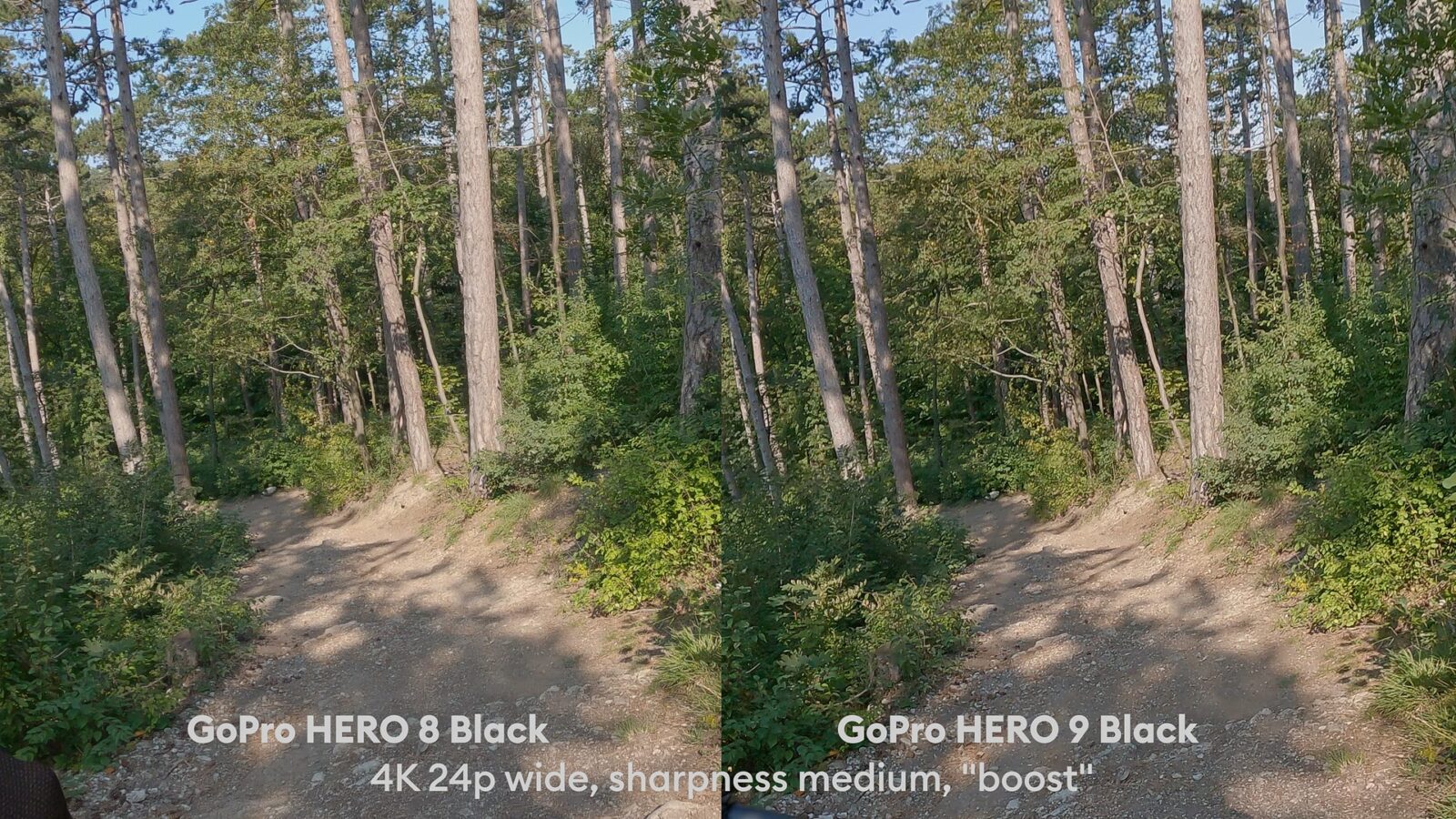
Hence, I recommend shooting 5K with the new HERO9 Black!
Slow Motion Capabilities
The following resolutions and frame rates are available:
- 4K up to 60p
- 2.7K up to 120fps
- 1080p240 frames per second
All stabilized with Hypersmooth, even with “Boost” mode available. Also, the following field of view options are there: SuperView, Wide, Linear, Linear & Horizon Levelled, and a “Narrow” mode, really nice!
That sounds great, however, I was really hoping to see improved image quality, especially for the 1080p240 mode which in the past looked more like SD than HD.
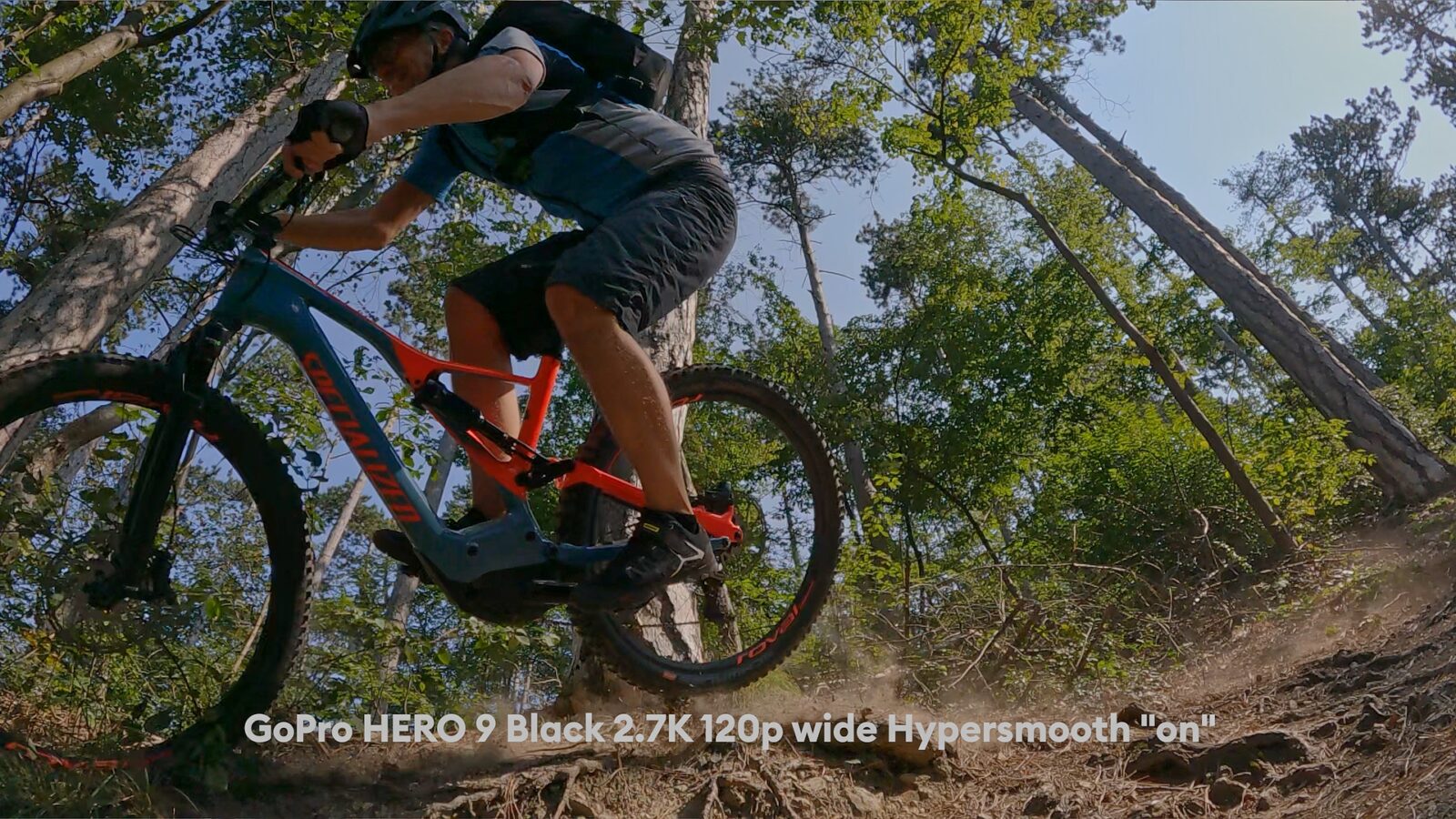
Unfortunately, that is not the case – 1080p240 and 2.7K120 still look very much the same like in previous generation cameras, and 4K might look even worse – only 5K looks much better. See the images below:
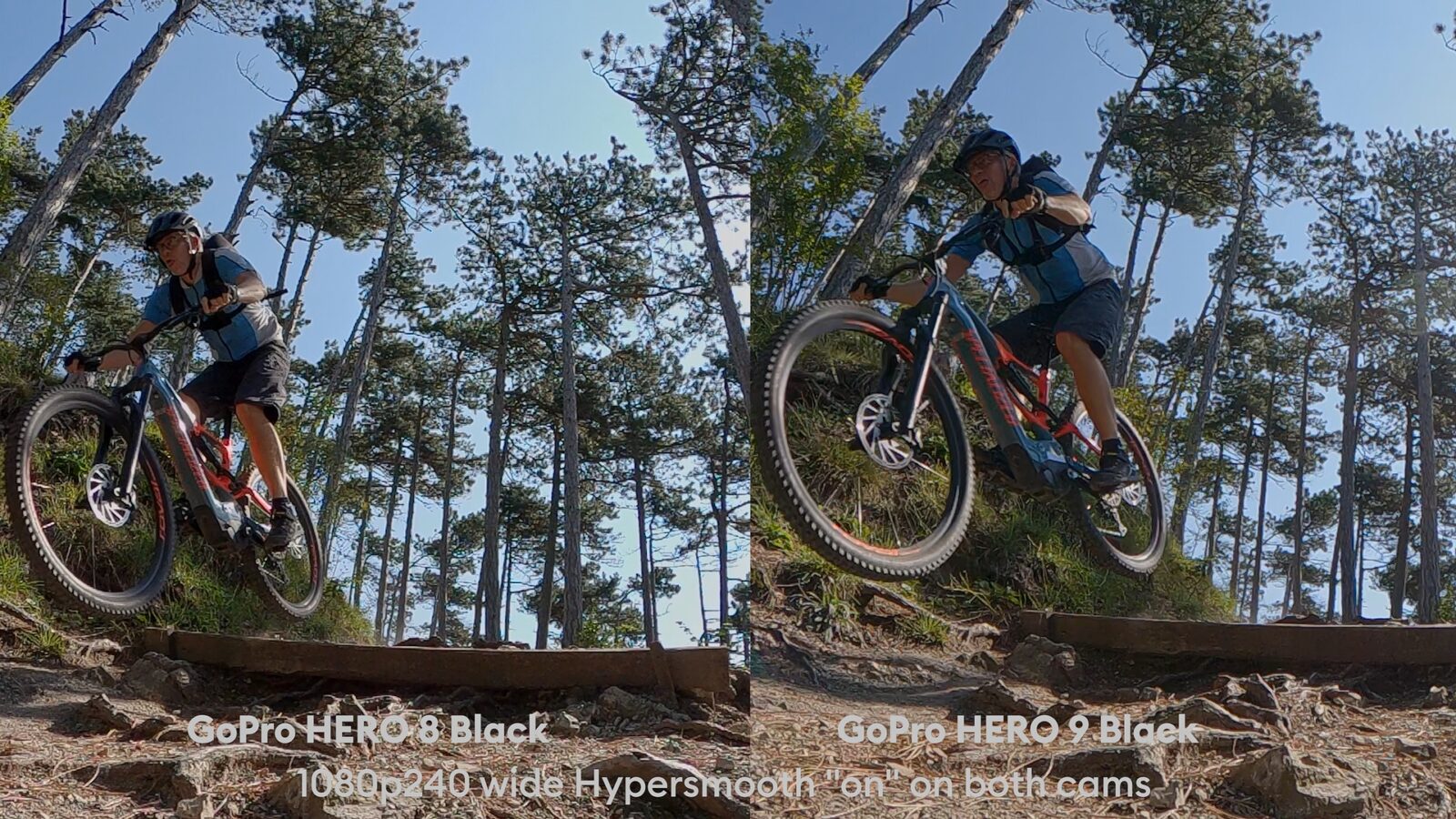
Image Stabilization – Hypersmooth 3
When filming on a mountain bike, the shakiness of unstabilized footage is an issue to an extent that it cannot be rectified in post without significant image degradation.
That’s why GoPro invented the Karma Grip gimbal some years ago – a product that produced amazingly stable footage but with significant flaws in usability. The Karma Grip was abandoned a bit later when GoPro introduced Hypersmooth, their in-camera image stabilization function.
Hypersmooth works amazingly well, to an extent that it can replace a gimbal for some shots. But not for all – I certainly do not agree with GoPro’s marketing claim “We killed the gimbal”. Karma Grip footage is way better stabilized in all shooting situations than all versions of Hypersmooth so far.
Spoiler alert – that statement holds true also for the latest generation Hypersmooth 3 found in the new HERO9 Black.
Please watch the video above – in 5K mode, Hypersmooth 3 is a step backward from the Hero8 Black, in 4K mode it is definitely an improvement.
At least, on the mountain bike, the shaky 5K footage of the HERO9 looks more spectacular ;-)
GoPro HERO9 Black – Audio
Audio is always the weakest point of all action cams. However, audio quality has definitely improved with the HERO9 Black. I was quite surprised to see that even at higher speeds the audio was sort of OK without the usual wind clipping.
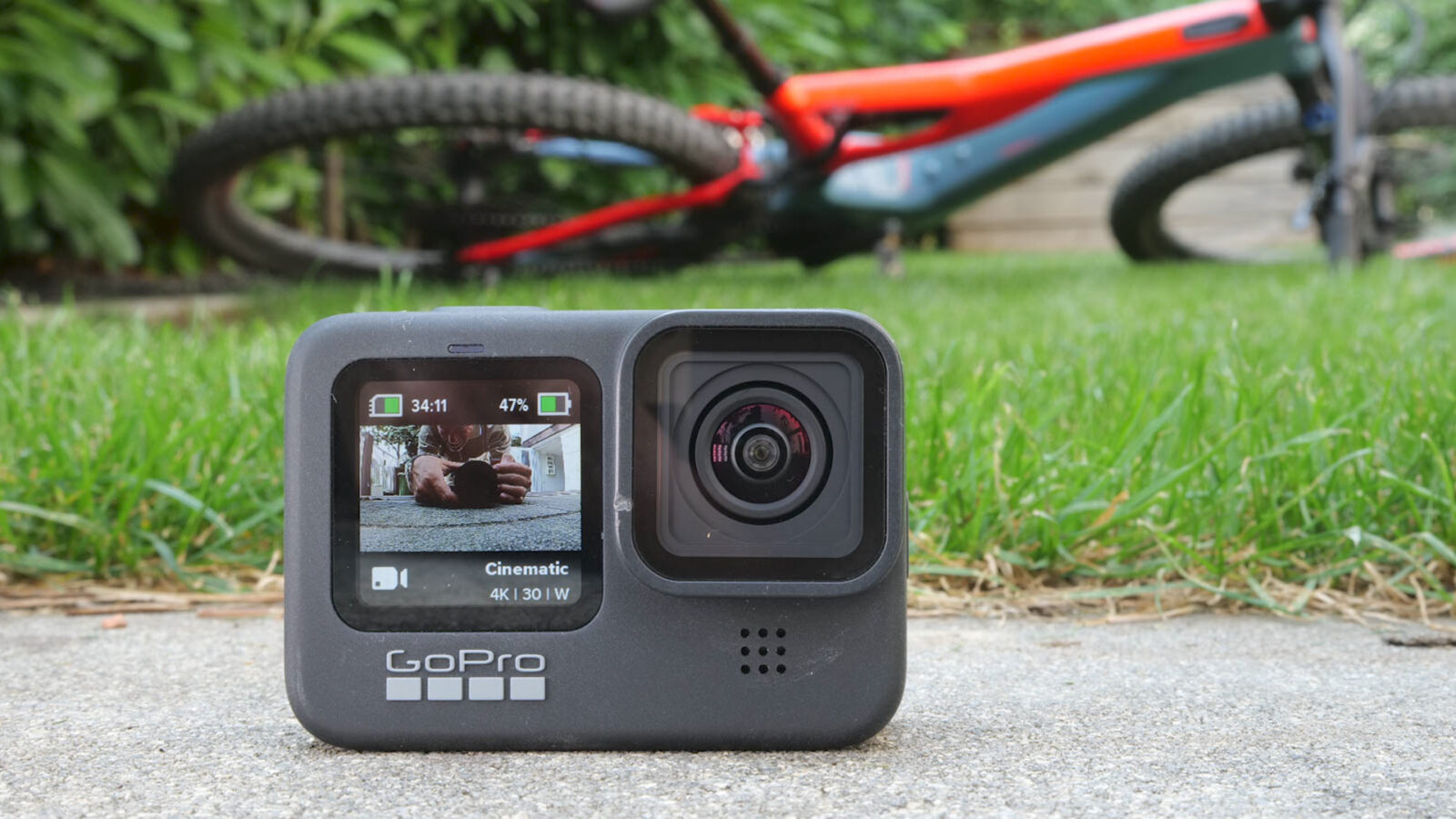
Summary
So please allow me to summarize. The new generation GoPro Hero 9 Black with its new 5K mode sets the bar higher again in terms of image quality. Image detail, color science, and auto white balance in 5K are superb!
The high frame rate modes are very similar to older generation HERO’s – even the HERO6 already had all those modes – image quality has not been improved since then.
Last but not least, image stabilization. This is a mixed bag. Hypersmooth 3 as GoPro calls it has made a step backward in comparison to the previous Hero8 Black (when filming with the HERO9 in 5K). In 4K it has made a step forward.
Therefore, it depends on your use case which of the above mentioned features are important to you.
We shouldn’t forget, it has never been easier to capture great footage – don’t worry about focus, exposure, shaky footage, white balance (manual overrides are possible), water, or dropping the cam – just shoot! It is great fun and easy to use these cameras nowadays.
Overall, the new GoPro HERO9 Black packs an amazing feature set into a small high quality body with greatly improved usability due to the added front screen. All in all fully recommended as far as I’m concerned!
What do you think about the new GoPro HERO9 Black features and image quality? Will you consider upgrading your current action-cam to the new model? Please share your thoughts with us in the below comment section.
